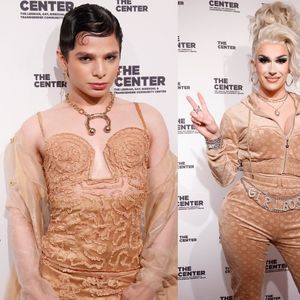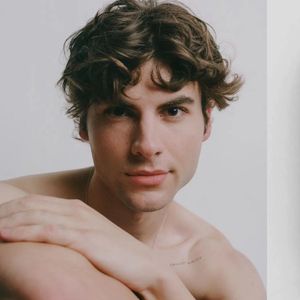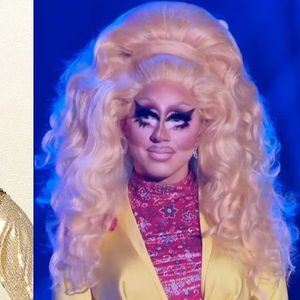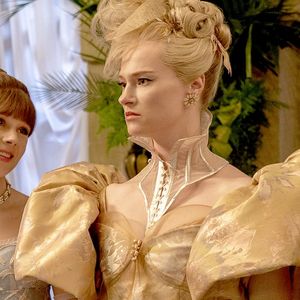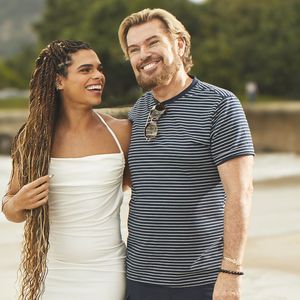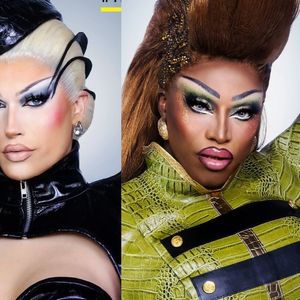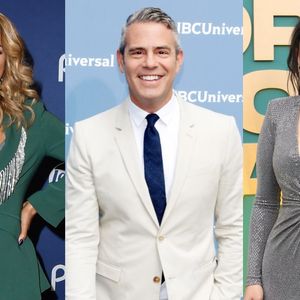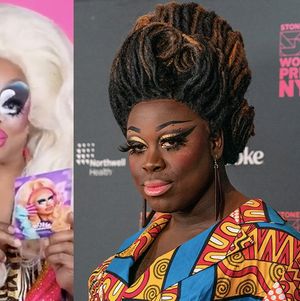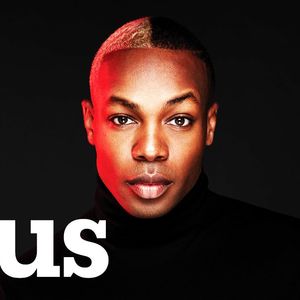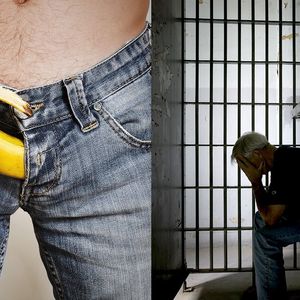
CONTACTStaffCAREER OPPORTUNITIESADVERTISE WITH USPRIVACY POLICYPRIVACY PREFERENCESTERMS OF USELEGAL NOTICE
© 2024 Pride Publishing Inc.
All Rights reserved
All Rights reserved
By continuing to use our site, you agree to our Private Policy and Terms of Use.
As lesbian, bisexual, and gay soldiers (not to mention future recruits) celebrate the end of "don't ask, don't tell," the transgender community will continue to serve in silence -- if at all. The repeal is, according to many transgender people, the community's bridesmaid moment.
The Transgender American Veterans Association reports there could be up to 300,000 transgender military veterans in the U.S. today. In 2005, when the TAVA put a wreath on the Tomb of the Unknown Solider, there was a transgender person representing every U.S. military conflict since WWII.
Still, the very psychological diagnosis that allows transgender folks to get medical care -- Gender Identity Disorder -- makes them ineligible to serve. And those who've gone through corrective surgeries are listed as having "physical abnormalities." Anyone who is caught wearing clothing of the perceived opposite sex receives a court martial.
According to "Transgender People in the U.S. Military: Summary and Analysis of the 2008 Survey" by the Transgender America Veterans Association the vast majority of transgender vets are trans women (of those using VA hospitals, 13% identified on the FTM spectrum, while 82% identified somewhere on the MTF spectrum) although trans men were three times more likely than trans women to have been asked by an officer about their sexual orientation (33% versus 11%).
Some trans vets have become notable anti-war protestors (like Midge Potts, a 38-year old Gulf War vet who was become a vocal opponent of Middle East occupations). But like Potts, many of the 300,000 transgender vets are still proud of their service. We talked to four of them.
Calpernia Sarah Addams
Age: 40 ("But only about 18 years into life as my true self. I still feel like a teenager!")
Served: U.S. Navy, attached to the Marines during the first Gulf War. "I served a four-year enlistment beginning in 1990. During my time as a Field Medical Combat Specialist in the Navy Hospital Corps, I served in Chicago, Memphis, North Carolina, Saudi Arabia and on a tiny, remote Alaskan island."
Now: An actress, singer, musician, activist, author, writer, and producer in Hollywood, California. "You have to do more than one job to make it in Hollywood." Addams starred in Woman's Picture and in the Logo reality dating show, Transamerican Love Story.
Home life: "I am single, open to dating but really focused on my art these days."
Coming out: "Toward the end of my enlistment, I fell in with a group of what I called 'wilderness lesbians' and began to explore my sexuality and gender for the very first time in my life. The support of those women helped me embark on a path to self-discovery right at the moment my enlistment was up, and within the year I was back home in Nashville, working as a female entertainer and beginning my transition."
Why the Navy? "I was a smart and creative child who unfortunately grew up in what I call a Christian fundamentalist cult, where education was energetically discouraged because it would 'lead me away from God.'" College was off the table, so Addams shipped off to Navy Basic Training within a year. "I joined to get away from an oppressive upbringing with no future. At age 18, I had never seen a movie in a theater, never been allowed to listen to modern music, and had never been allowed to socialize with my peers. The Navy jammed me in amongst my peers and made all of us work together to better ourselves, and in the process I learned about the world outside the cult in which I was raised."
How being trans affected her military career: "When I was a toddler, I remember running through church wearing a paper nun's hat screaming, 'I'm Sister Batrille!' because I wanted to be Sally Fields' character from The Flying Nun on television. I had no words for my feelings like transsexual or transgendered, I just knew that I often fantasized deeply about being a girl and crushed on boys. I was a sensitive and perceptive child. I knew from earliest ages that my feelings were bad, so I did my best to hide them. The job I chose in the Navy was in the Hospital Corps as a combat medic (NEC 8404), perhaps one of the few military jobs where someone perceived as male was allowed to show empathy and nurturing. I was often told that my voice had a particularly soothing quality to children in the emergency room, and I was never ashamed to hold someone's hand if they were in pain or frightened during a difficult medical procedure. I gave professional comfort to many men, women, and children in some of the most difficult and vulnerable moments of their lives, and I will always consider that among my most worthwhile achievements."
On whether trans people ever be allowed to serve openly: "I don't know if the Armed Services will ever allow transgender or transsexual members. I'm very pessimistic in general as to what I expect from the world. We've only just recently 'repealed' don't ask, don't tell, and I put that in quotes because there are still cases pending against soldiers, sailors, and marines because of their sexuality. Transition is among the most difficult times of someone's lives, so in any case I would recommend that someone finish transition before joining the military. I'd have wanted to be very secure in something as basic as my body and social gender presentation before I went through the trials of boot camp, the Gulf War, and harrowing emergency room medicine. I don't forgive society for treating GLBT people like third-class citizens, even if they begrudgingly give us partial legal rights now. They're not sorry, and I haven't forgotten."
What part of your military service is most memorable for you? "My time in the war was so surreal that it's difficult to focus on it nowadays. Instead, I often dream that I'm back on the remote Alaskan island where I drove an ambulance through snowstorms up and down the sides of a volcano, or shivered in my parka as I searched for a vein shrunken deep under the skin by the cold, or flew to a tiny neighboring island to rescue a downed Chinese airliner full of injured passengers. Pewter grey ocean framed by elemental clouds lit from behind as they must have been at the very beginning of time while we lived our lives surrounded by the rusted ruins of military operations reaching back to World War II."
Would you do it all over again? "For me, in my unique circumstances, the military took me out of a soul-killing home situation and exposed me to the world at large. It taught me strength, discipline, self-reliance, and skills that carried me through all the rest of my life. Today, even as a cabaret singer and actress, I walk onstage knowing that I have hefted an M16 assault rifle across desert sands in defense of my hospital and pressed my bare hands against the gushing lifeblood of a wounded soldier. And after that, what is there, really, to be scared of?"
Read more about Calpernia's time in the military or in Alaska as a Navy medic.
Autumn Sandeen
Age: "I'm between 50 and 55 years of age."
Served: United States Navy, 1980-2000 on four ships -- the USS Mahlon S. Tisdale (FFG-27), USS Ford (FFG-54), USS Gary (FFG-51), and USS Coronado (AGF-11). "My service on the USS Gary was during the Persian Gulf War -- even though I showed up in the Gulf two months after the ground war ended, I'm considered a Persian Gulf War veteran." Most of her Navy career was spent in Long Beach and San Diego, California as a fire controlman. Fire controlmen work on the electronics and electro-mechanical equipment (such as radars, computers, synchro-servo systems, and hydraulics) used to point missile launchers and ships' guns.
Now: After retiring from the U.S. Navy, Sandeen was evaluated by the Veterans Administration for disability and is now disability retired. However, the San Diego, Calif. resident writes a weekly column for San Diego's LGBT Weekly, and for the blog Pam's House Blend.
Home life: She's divorced and has three children. "I'm still supporting my oldest son while he's in an apprenticeship and school program for a career," says Sandeen, who has made headlines in recent months as one of the GetEqual 6, and GetEqual 13. "We handcuffed ourselves to the White House fence -- the veterans in uniform -- for the repeal of DADT."
Did your departure from the military have anything to do with your gender? "Not exactly. I retired normally after 20 years of service. However, after I figured out I was transgender, and might transition after I left the military, I decided to stick it out until retirement. I knew that there was a lot of stigma to being a transsexual, so I wanted to have at least some income coming to me after leaving the military. So in a sense, my departure from the Navy did have something to do with my gender, but not in the way you were probably thinking."
On why she served: The recession of 1980. "I was 21 and had no job skills, so I joined the military to have a job and obtain some marketable skills."
Coming out as trans: "I knew before I joined the military I was transgender. I first knew at age 14 I was a transsexual, and then talked myself out of it due to being raised in a Pentecostal church. And because I wasn't attracted to men I thought I must be a transvestite -- I was under the impression that to be a transsexual that one had to be heterosexual in my target sex."
Will the military ever allow trans soldiers to serve openly? "Yes. But I believe it'll be a generational change. It took 17 years for the repeal of DADT, and I believe it'll take somewhere in that range of years for trans people to be able to serve openly."
Most memorable part of service: "Being sexually harassed in my last year of military service because of my feminine gender expression," Sandeen recalls. "If you look up Autumn Sandeen and HRC, you can find my DADT story relating to my sexual harassment up on the web."
Would you do it all over again? "I don't know. Being disabled, I fell into a huge safety net because I retired from the military, and because I was evaluated as disabled by the VA -- and my bipolar condition is considered a service-connected disability. Yet on another level, I wonder what my life would be like if I transitioned at a younger age. The reality is I can't go back and change my life -- even if I wanted to -- so I don't really worry about what other arcs my life could've taken. It's an interesting question, though."
Calahan Miller
Age: 48
Served: Army, September 1983 to January 1986. Completed Basic Training and AIT School for Light Wheeled Vehicle and Power Generator Mechanic (MOS: 63B) at Ft. Jackson, SC. First Duty Assignment: B Company, 141st Signal Battalion, 1st Armored Division, Barton Barracks, Ansbach, Germany. Last assignment: HHC USAEPG, Ft. Huachuca, Arizona. Honorable Discharge with the rank of E-4 (Specialists).
Now: Lives in Los Angeles and is on disability for obsessive compulsive disorder and generalized anxiety disorder.
Home life: Miller has been with a partner for nearly a decade, and the two helped raise her son (who is now an adult).
Why the military? "I wanted to serve in the military primarily because I grew up as an Air Force brat, so the military life is what I knew. I knew I could get money for college and I knew I could travel. When I signed up I requested an overseas assignment in Europe."
Did you know you were trans when you signed up? "I struggled with my gender identity beginning at the age of 15. I didn't know the term transgender until, in 1994, I was introduced to an FTM through a co-worker. When I got my first home computer in 1999, I began exhaustive research," says Miller, who began his transition in 2001, when he was 37. "While I was in the Army, when I was in uniform, on duty, my gender was more androgynous. In uniform we were not so much male or female as we were all soldiers." The only time Miller wasn't just a soldier was when the servicemembers were required to wear their formal "dress greens" -- which meant females wore skirts. "Ugg, I hated that," he laughs.
Gender in the military: "My job as a mechanic. Working in the motor pool was a non-traditional job for a female. While I worked I didn't have the constant reminder of my body's gender, while I worked I felt male. Out of uniform, off duty, was another thing," recalls Miller, who struggled with gender issues on a day-to-day basis because he was living as a lesbian and in a lesbian relationship. "Additionally, because I was a military service member and 'a lesbian' I had to keep my personal life a secret, by not acknowledging it and outright lying about it. All the while hating that I was stuck in the female body, because if I had been born in the right body and been the man I knew I was then I wouldn't have to hide and lie about who I loved."
Will trans people ever be allowed to serve in the military? "I do not think the Armed Services will ever allow transgender soldiers as long as being trans is classified as Gender Identity Disorder, or Gender Dysphoria, a mental illness or medical disorder, listed in the DSM-IV."
Most memorable time in the service: The good and the bad. The bad: the investigation into Miller's relationship with a female service member. "I had met and began a relationship with a soon-to-be-divorced woman at my first duty station. Her soon-to-be ex-husband had found some letters written by me to her and set out on a mission to destroy us. They launched an investigation and tried to pursue criminal charges. Luckily the contents of my letters where vague and therefore not proof of any transgressions, and so it was dropped because all they had was the accusations of a scorned ex-husband."
And the good: "I really liked the military; I liked my job, I liked the structure and routine of the military. I was in great physical shape, and more often than not felt comfortable in my skin."
Would he do it all over again? "Yes," he says emphatically. "I would."
Cheryl Costa
Age: 59 ("I've been Cheryl for 22 years, was Carl Costa for 37 years.")
Service: U.S. Air Force 1970 to 1972 - Telephone lineman: Lackland AFB, Cam Ranh Bay, Vietnam, Yokota, Japan. E-4 U.S. Navy 1974 to 1979 - Qualified in Submarines - Navigation & Radar tech; Groton, CT E-5. U.S. Navy Reserve 1979 to1981 - Electronics Instructor; Binghamton, NY E-6
Now: Now a senior information assurance engineer in the aerospace industry, Costa lived in Washington, D.C. for 26 years but has called Syracuse, N.Y. home for the last five.
Home life: Costa is "now married to an awesome lady -- as a result of the recent New York legalization of same-sex marriage!"
Did your departure from the military have anything to do with your gender? "Yes in a way. I was trying to have a career but my marriage of that time went south and I lost confidence in my ex to keep her mouth shut, concerned she would rat me out to my superiors just to be mean."
On why she served: "I was a poor kid in an upstate New York mill town, who wanted to see the world, have some adventure, and perhaps have a high-tech career. My electronics instructor in high school encouraged me to get out of dodge and join the service to pursue the high-tech career and educational opportunities."
Did you know you were trans? "Oh yes, I knew from an early age, but in the mid-1960s there was no such thing as an open and out LGBT community," Costa recalls. "I was 16 when Stonewall happened. I watched the news footage, from the New York City TV stations, of the big-haired queens jeering at the cops from the police lines -- I could only whisper to myself, 'Go get them girls!' I realized that to do this life change I was going to have a good job and good skills. I resigned myself to doing that and being a poor kid, the U.S. military was the way to do it. I hid my nature hoping for a day when I could be open and out about it." Later as a civilian, Costa was part of a local support group and in 1985 the tabloid Weekly World News outed her and other members of the group. "After that I had nothing left to lose. I executed my changed over the next four years."
Will transgender soldiers ever be allowed to serve? "I would hope so -- eventually. My experience with trans persons is that most of them are among the brightest people I know. Give them a chance to be who their inner spirit tells them they are and they'll blossom into loyal, highly productive, and creative people."
Most memorable military moment: "I loved the submarine special missions, the Tom Clancy sort of stuff," she recalls. "It was interesting and adventurous. Those missions tested your mettle and technical expertise. Wish I could be a part of it today."
Would you do it all over again? "Yes, in a heartbeat!" she says. "Had I not feared negative exposure and the risk of discharge under less than honorable conditions, I most likely would have done a long career in the service. I loved the work, the travel and enjoyed the lifestyle."
deliciousdiane
Want more breaking equality news & trending entertainment stories?
Check out our NEW 24/7 streaming service: the Advocate Channel!
Download the Advocate Channel App for your mobile phone and your favorite streaming device!
From our Sponsors
Most Popular
Here Are Our 2024 Election Predictions. Will They Come True?
November 07 2023 1:46 PM
17 Celebs Who Are Out & Proud of Their Trans & Nonbinary Kids
November 30 2023 10:41 AM
Here Are the 15 Most LGBTQ-Friendly Cities in the U.S.
November 01 2023 5:09 PM
Which State Is the Queerest? These Are the States With the Most LGBTQ+ People
December 11 2023 10:00 AM
Meet all 37 of the queer women in this season's WNBA
April 17 2024 11:24 AM
These 27 Senate Hearing Room Gay Sex Jokes Are Truly Exquisite
December 17 2023 3:33 PM
10 Cheeky and Homoerotic Photos From Bob Mizer's Nude Films
November 18 2023 10:05 PM
42 Flaming Hot Photos From 2024's Australian Firefighters Calendar
November 10 2023 6:08 PM
These Are the 5 States With the Smallest Percentage of LGBTQ+ People
December 13 2023 9:15 AM
Here are the 15 gayest travel destinations in the world: report
March 26 2024 9:23 AM
Watch Now: Advocate Channel
Trending Stories & News
For more news and videos on advocatechannel.com, click here.
Trending Stories & News
For more news and videos on advocatechannel.com, click here.
Latest Stories
'Parents' Rights' movements forget families have the right to read LGBTQ+ books
April 17 2024 10:15 AM
This gay man had to flee Ghana after a violent attack. He’s finally been granted asylum
April 17 2024 9:17 AM
Ohio court temporarily blocks ban on gender-affirming care for trans youth
April 16 2024 5:33 PM
How library workers are defending books, democracy, and queer lives
April 16 2024 4:38 PM
Trending stories
Most Recent
Recommended Stories for You

Diane Anderson-Minshall
Diane Anderson-Minshall is the CEO of Pride Media, and editorial director of The Advocate, Out, and Plus magazine. She's the winner of numerous awards from GLAAD, the NLGJA, WPA, and was named to Folio's Top Women in Media list. She and her co-pilot of 30 years, transgender journalist Jacob Anderson-Minshall penned several books including Queerly Beloved: A Love Across Genders.
Diane Anderson-Minshall is the CEO of Pride Media, and editorial director of The Advocate, Out, and Plus magazine. She's the winner of numerous awards from GLAAD, the NLGJA, WPA, and was named to Folio's Top Women in Media list. She and her co-pilot of 30 years, transgender journalist Jacob Anderson-Minshall penned several books including Queerly Beloved: A Love Across Genders.


































